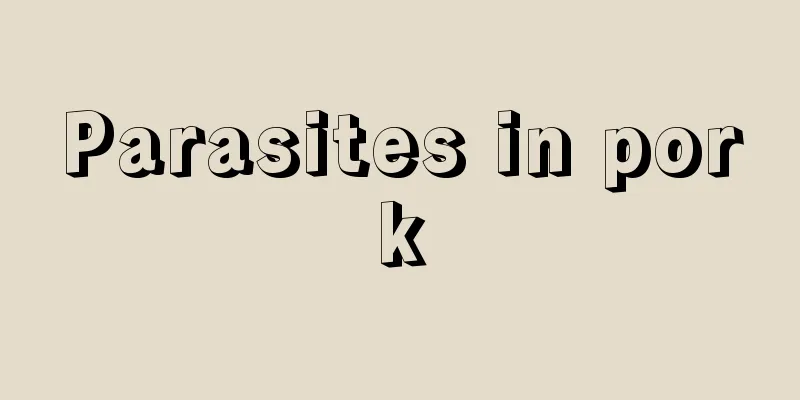Parasites in pork

|
Parasites in pork will not only directly affect the growth of piglets, but also affect the quality of the pork itself. At the same time, if parasites appear in the pig's body, generally speaking, the processing of its meat must be processed at high temperature, otherwise the parasite eggs in its body will hatch and grow in the human body, posing a great danger to human health. Pigs are intermediate hosts for many parasites and may contain multiple parasites. Pigs are the intermediate hosts of Taenia solium, and are also important hosts of Trichinella spiralis, Sarcocystis and Toxoplasma gondii. Pork may contain cysticercus of Taenia solium (such pork is commonly known as "rice pork" or "rice noodle pork"), cysts formed by the larvae of Trichinella spiralis, cysts formed by Sarcocystis and Toxoplasma. People who eat such uncooked pork may be infected with Taenia solium (called Cunbaiworm or Bai in ancient medical books), Trichinella spiralis, Sarcocystis and Toxoplasma. Pork redworm damage: Adult worms parasitize the human small intestine, usually with one worm. In some endemic areas, the average number of infected worms is as high as 2.3 to 3.8. China reported one case with the highest number of infections at 19. The clinical symptoms of enteric nematode disease are generally mild. The discovery of proglottids in stool is the most common reason for patients to seek medical attention. A small number of patients have symptoms such as upper or entire abdominal ulcer, indigestion, diarrhea, and weight loss. Occasionally, local damage may occur due to the fixation of the head segment to the intestinal wall, and in a few cases, the intestinal wall may be pierced or intestinal obstruction may be caused. China has reported cases of ectopic parasitism of adult worms (body size 15×0.3cm and 8cm×0.2cm respectively) under the thigh skin and in the thyroid tissue. Cysticercosis is one of the parasitic diseases that seriously harms the human body. It is commonly known as cysticercosis and its degree of harm is greater than that of red worm disease. The degree of harm varies depending on the location and number of cysticercus parasites. Generally speaking, pork on the market has undergone strict testing and there are no major problems. Cooking pork thoroughly can kill these parasites. Eating undercooked pork infected with the above parasites may cause infection with these parasites. |
<<: What to do if you peed on your cotton quilt
>>: What's the matter with white drops at the end of urine?
Recommend
How to store fresh edamame rice
In daily life, people prefer to eat edamame rice,...
Using banana peels like this can remove age spots
Banana peel is a common fruit peel in daily life....
What should I eat if I have bloodshot eyes?
Eyes are the windows to our soul and the only sen...
Early brain cancer blood test diagnosis
There are many types of early brain tumor diagnos...
Can I eat coriander if I have stomach problems?
Coriander is a wonderful food. Many people like t...
My teeth suddenly became crooked when I was 30 years old
People will stop growing teeth around the age of ...
Athlete's heart rate
The heart's beating ability has a huge impact...
What are the symptoms of chronic sleep deprivation?
We all know that lack of sleep can cause great ha...
Why do I keep leaking milk when my milk supply is insufficient
After giving birth, mothers may experience insuff...
Is it okay to pluck armpit hair?
There are a small amount of sweat hair distribute...
Dietary considerations for patients with esophageal cancer
The incidence of cancer in modern society is alre...
What diseases does the Acupuncture Department treat?
Acupuncture is a common treatment method. In dail...
Indications and contraindications for limb-salvage surgery in patients with bone cancer
Limb-salvage surgery can be said to be the main m...
9 effective and quick methods to cure toothache caused by wind and fire
Wind-fire toothache is a type of toothache. Just ...
Kidney cancer was misdiagnosed as subcapsular hematoma and treatment was delayed
A year ago, Mr. Li had been feeling back pain. He...









